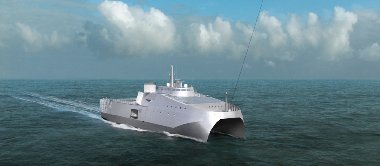Arthur-Baidoo, Mr Eugene (2016) Influence of the co-implantation of Mo/Cs on their thermal behaviour in Uranium dioxide fuel PFE - Projet de fin d'études, ENSTA.
Aucun fichier n'a encore été téléchargé pour ce document.
Résumé
This internship has been carried out in the “Aval du Cycle Electronucléaire” (ACE) Group, which is a part of the Science and Radiation Department at the “Institut Physique Nucléaire de Lyon” (IPNL) located on the campus of Université Claude Bernard Lyon-1 (UCBL). A part of its research activities is in relation to the fission products behaviour in the nuclear fuel. This internship is related to this topic and has been conducted under six months from April to September 2016. The main objective of the internship was to study the influence of the co-implantation of molybdenum (Mo) and caesium (Cs) on their thermal behaviour in uranium dioxide (UO2). Mo and Cs are two fission products created within the nuclear fuel (UO2) during nuclear power plants operation. Mo can adopt several chemical phases: oxide (MoO2 and MoO3) and metallic phases. It may also play a role as a buffer of oxygen potential when exposed to an oxidizing atmosphere. Cs has a low solubility and has the potential of forming compounds with nearby atoms like Mo (caesium molybdate (Cs2MoO4)) and UO2 to form Uranates (caesium Uranate (Cs2UO4)). The complexity of their behaviour and their migration at high temperature is the main challenge of this study. For my internship, we used depleted UO2 pellets elaborated by AREVA and, by using ion beam thanks to an accelerator at Lyon, stable isotopes of Mo and Cs were implanted into UO2 samples which leads to quasi-Gaussian distributions also called depth profiles. Thermal annealing with different furnaces under high temperature (800 °C–1800 °C) and also under reducing atmosphere (Ar + 5% H2) were performed in order to try to modify these depth profiles. The analytical techniques were Rutherford Backscattering Spectrometry (RBS), Scanning Electron Microscopy (SEM) for surface characterisation, Secondary Ion Mass Spectrometry (SIMS) and optical interferometry for depth profile studies. Samples surface characterisation revealed that the mean grain size (~13 µm) of the samples was smaller than the minimum required grain size (>20 µm) targeted during UO2 pellets sintering. Thus higher grain sizes can be required on future samples to focus the study on intra-granular diffusion. From SIMS results, it was realised that, even though the samples have been implanted under different fluence, it does not have any impact and no Mo migration was observed up to 1600°C. Further annealings between 1600 °C and 1800 °C are required to observe some migration. This would be possible once the tests on the newly purchased TGA by the ACE Group is completed. The study on the Cs behaviour has begun during my internship but there was not enough time to analyse the depth profiles.
| Type de document: | Rapport ou mémoire (PFE - Projet de fin d'études) |
|---|---|
| Sujets: | Science des matériaux, mécanique, génie mécanique |
| Code ID : | 6771 |
| Déposé par : | Eugéne Arthur-Baidoo |
| Déposé le : | 18 janv. 2017 13:56 |
| Dernière modification: | 18 janv. 2017 13:56 |







